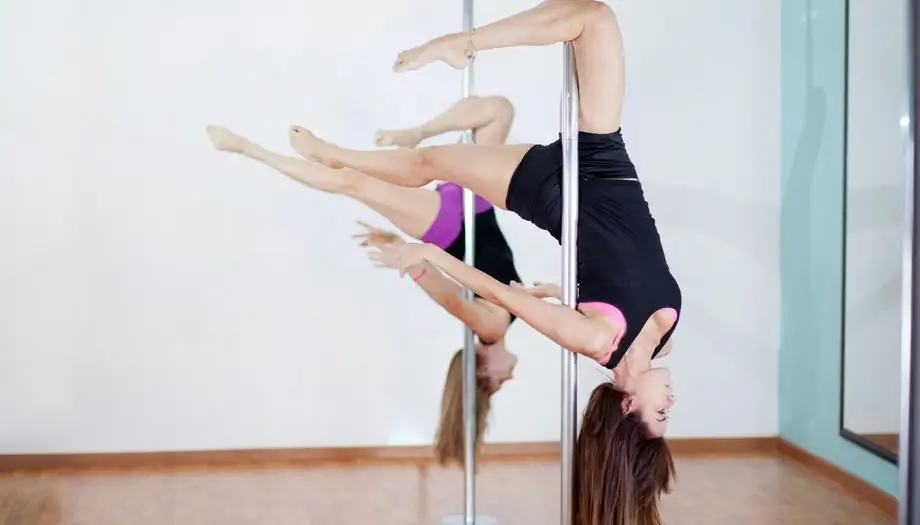- Author Rachel Wainwright [email protected].
- Public 2023-12-15 07:39.
- Last modified 2025-11-02 20:14.
Paul dance
Floor dance is a type of fitness based on pole exercises with elements of artistic gymnastics and pole acrobatics. This type of fitness is designed to strengthen all muscle groups, increase the level of choreography and plastics.

Features of floor dance classes
Paul dance is a kind of sports pole dance, which is a pole for various elements of choreography and acrobatics. In this type of fitness, special emphasis is placed on musicality and plasticity.
There are several schools of polo dance, which are based on a sports orientation, pole acrobatics and complex performance of elements.
Floor dance for beginners includes simple elements of plasticity and acrobatics with a pole on the floor. At the intermediate skill level, rotations around the pylon and other dynamic elements are performed. Acrobatic stunts are performed at a high level on a pylon more than 2-3 meters high.
An important feature of floor dance is the purity of the performance of tricks and the flexibility of transitions from one element to another.
When performing the elements of floor dance, it is necessary to keep straight knees and outstretched socks, as well as work out all the accents and details in the movements. An important criterion for this fitness is the correspondence of movements to musical accompaniment.
Floor dance classes require endurance, good coordination, agility and flexibility. Dancers should have high muscle tone, good stretching and gracefulness.
Almost all floor dance classes are based on aerobic exercises, before which a special warm-up is carried out to warm up the muscles. Basically, during the performance of the floor dance elements, the muscles of the upper body, back and abs are involved.
Paul dance for beginners is carried out in a gentle mode with a long warm-up and enhanced stretching exercises. In the first lessons, you need to learn how to control your body, feel the pylon and be able to keep balance.
Paul dance elements
Currently, floor dance is a popular form of dance fitness. Since 2003, international gender dance competitions have been held in many countries. The competition focuses on artistry and athleticism, as well as the purity and precision of the elements.
Floor dance elements can be divided into two main styles: artistic and sporty. Sports elements are designed for endurance and high physical fitness, and artistic elements must be original, bright and spectacular.
Training in this area of fitness is carried out in various clubs and schools. International Paul Dance Schools are divided into several categories according to the types of elements and the content of the acrobatic program.
The main schools of floor dance include dance and sports. Dance schools train dancers with aesthetic choreographic programs. In sports schools, classes are held on individual and general acrobatic programs aimed at improving physical fitness, increasing muscle mass and athleticism.

Benefits of Paul Dance
The main advantages of floor dance are:
- the ability to strengthen the muscles;
- increasing the flexibility and plasticity of the body;
- skin tightening and aging retardation;
- improved coordination;
- reducing excess weight;
- prevention of diseases of the musculoskeletal system and bone structure;
- maintaining correct posture.
Also, the aesthetic side of training plays an important role in floor dance, which allows dancers to become more feminine, attractive, graceful, relaxed and self-confident.
Found a mistake in the text? Select it and press Ctrl + Enter.






